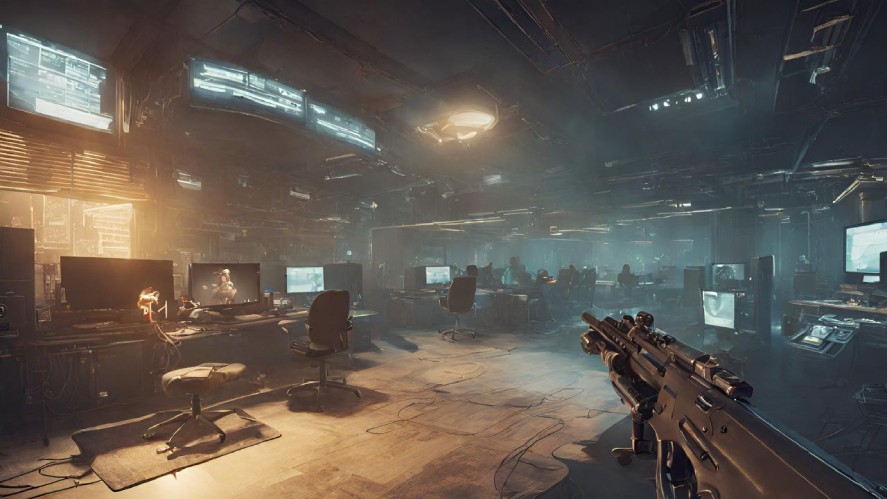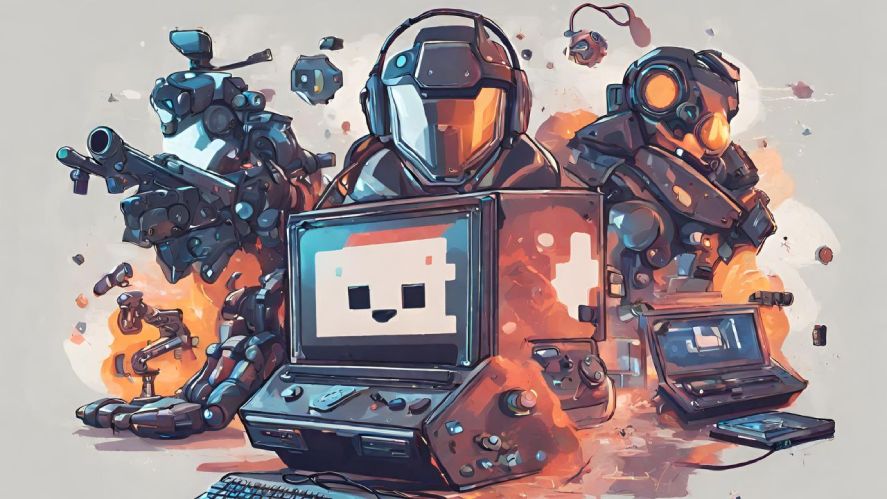Game development is a huge process that uses technical knowledge to bring the initial game ideas and concepts to life. It is a vibrant multidisciplinary field involving various aspects: design, art, audio, user interface, and more.
That said, in this fascinating journey, known as the game development cycle, every step plays an important role in shaping the final game. From the beginning stage to the moments when the finished game comes to the end users, every stage resonates into a perfect process.
So, let’s explore each phase of this journey to uncover how games are crafted!
The Game Development Cycle
The game development cycle often involves four phases to turn cool ideas into actual games.
This is a challenging journey that video game developers have to navigate to bring their creations to life and get people excited about it.
1. Pre-Production Phase
Every good implementation needs good preparation; that’s why this phase comes into play.
Before going to actual production, game creators, game developers, and other team members have to discuss coming up with the main game ideas and concepts of the projects.
Based on that, they will set the rules for the game publishing and decide the game’s key factors such as targeted audiences, budgets, gameplay, game genre, game niche, settings, and features. It’s like drawing a treasure map before going on a grand adventure.

By discussing all essential details, everything looks further clearer, every team member understands how the game should look like and which direction they have to navigate along the way.
That said, once all the ideas are set, game developers focus on bringing these concepts to life through prototypes and production planning documents.
For easy understanding, prototypes are like early versions of the game and can serve as experimental drafts. Video game developers create prototypes to see how the game elements fit together, and adjust step by step to ensure the final products will be enjoyable.
Additionally, production planning documents act as a detailed guideline for the game development team. It includes all the essential information and instructions to steer the team in the right direction.
2. Production Phase
This is the main phase where all ideas are put into motion and turned into reality.
The main objective of this stage is to develop games as a software product, so the implementers must blend creativity, innovation, and critical thinking.
2.1. Game Design
The game design stage is often divided into three main parts, which are:
- Scriptwriting: involves crafting the story, defining characters, and shaping dialogues. It is important because it can determine the game’s emotional impact; therefore, if performed well, game writers can enhance the engagement level of the players.
- Graphic design: the visual appeal of a game is largely crafted through graphic design. The graphic designers are responsible for visual elements, menus, status bars, and user interfaces. They have to ensure that all elements can define the game’s aesthetic identity.
- Level design: this is the architectural aspect of game creation. The designer has to construct the game’s various stages, difficulty levels, and winning elements to ensure a seamless and engaging progression for the player.

2.2. Art Production
Art production specialists can determine the visual soul of a game. They bring characters to life, design the game world, and also add movement through animation.
These people can be divided into two different competencies: 2D and 3D.
While in 2D games, artists often create flat images such as paintings, 3D artists, otherwise, craft three-dimensional models that add more depth and realism to the game world.
That said, the tools used are also different. The 2D artists often use Adobe Photoshop, while 3D artists use Maya, Max, and/or Blender.
2.3. Game Development
This is the backbone of the game development process as developers write codes to make the game function.
That said, game programming requires developers to obtain an extended skillset because they aren’t just creating lines of code; they are architects shaping virtual worlds.
As a result, besides coding languages such as C++ or Python, game developers need to understand deeply game engines and how to optimize them for the best performance.

Moreover, they must keep up with the technology as our world is ever-changing. Developers must incorporate AI, sound, and physics into the game to make it more real and responsive.
For example, use AI to make characters smart and respond properly in all events, or use sound techniques to make the surroundings where characters live even more real.
Developers often follow Agile methodologies rather than the Waterfall model in this game programming process.
Because the game development process requires constant modification and adaptation to the changing market, Agile and Scrum provide flexible frameworks that allow developers to respond swiftly to evolving needs.
To be more specific, Agile helps developers be flexible and adapt to changes, breaking down big tasks into smaller ones. Scrum is like a structured plan for teamwork, keeping everyone towards a common goal.
2.4. Testing
The main objective of this phase is to check whether there are bugs, glitches, missing features, or even stuck points in the game.
It’s also important for the game development team to check if the game is just the right level of challenge – not too hard and not too easy. Getting this balance right is crucial because it can affect how many people want to play the game after the release.
So, through this testing stage, developers can ensure the game works well and provides an enjoyable experience for players.
3. Post-Production Phase
After the game’s final version is released, there’s still work to keep it in the highest condition.
In this post-production phase, the main objective is game maintenance, whether indie games or AAA games.
Although testers or game development teams carefully monitor and fix bugs before release, the potential for minor bugs still exists.

That’s why developers will continue to monitor the game after it hits the market, ensure everything works as intended, and fix any unexpected issues.
Also, if necessary, developers will release the newly updated versions with new features, exciting content, and improvements to enhance the players’ gaming experience.
Furthermore, listening to players is immensely important after the game is released.
Whether through social media, forums, or feedback platforms, developers can seek what people say, identify what they love and don’t, and then make an effort to refine the game based on all these preferences.
4. Marketing and Distribution
If a game is well-produced, but it lacks effective game marketing and game distribution strategies, it may struggle to reach its intended audience.
So, capturing efficient strategies to maximize the game’s visibility to a wide range of audiences is important.

First and foremost, developers should carefully plan to inform the world about their game. This is known as the localization strategy, which tailors the game to targeted regions and languages to make the game more accessible and enjoyable in various places.
Secondly, choosing the right distribution platform can determine the game’s success. Some popular platforms like Steam and the Epic Games Store can help the game reach a wide audience.
Thus, more and more players engage in the game, and game creators can expand the fan base and receive more real feedback and suggestions.
Lastly, developers can give players a sneak peek with demos, allowing players to experience the game before deciding to purchase. This approach, by far, can foster a stronger connection between developers and their audience.
To learn how to publish your game, check out our articles.
Challenges and Innovations in Game Development
In this ever-changing world, game development trends also vary as time passes.
Developers have to deal with some evolving challenges, including technical constraints. Because they have to keep up with the hardware and software advancements, it might take lots of time and effort to adapt.
Moreover, developers have to deal with time management. They have to meet deadlines and maintain the quality of the game simultaneously, as any delay can cause an increase in costs and missed opportunities.
Furthermore, staying innovative can be seen as a constant challenge as they can shape the future of the game creation.

One of the most prominent game development trends is VR integration. This technology delivers players into entirely new dimensions with a more immersive experience.
We should also discuss how AI has affected the way games are made. It helps the character become smarter and more responsive and creates game worlds that adapt to the player’s choice, making every experience in the game personalized.
So, as the innovation continues, the future of game creation holds promises of excitement and endless adventure.
Conclusion
The game development cycle is a long journey, from the initial concepts to the official game release to the market.
Each stage contributes to the successful game development so they are equally important. So, as every step in this journey matters, they should be approached with care and attention.
All in all, it’s not just about releasing a game; it’s about crafting an unforgettable adventure that resonates with players.
Loading survey...

